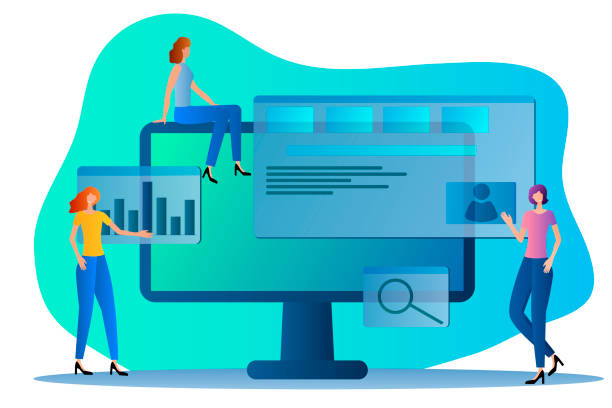An Introduction to Multilingual Website Design and Its Importance

In the era of globalization, reaching cross-border markets is no longer just a competitive advantage, but has become a necessity for the survival and growth of many businesses.
In this regard, multilingual website design plays a pivotal role.
A multilingual website refers to a platform where its content is available to users in multiple different languages, allowing them to choose their preferred language for interacting with the site.
This is not limited to mere word-for-word translation; it includes understanding and applying subtle cultural differences, appropriate formatting for dates, times, currency units, and even correct text direction for languages like Persian and Arabic (right-to-left).
The main goal of #multilingual_design is to create a completely native and natural user experience for every visitor, regardless of their geographical location or native language.
This approach enables businesses to not only expand their reach to global audiences but also to gain the trust and loyalty of international customers.
This chapter explains and educates on this concept and the reasons for its increasing importance in modern digital marketing strategies.
Your website is the first point of contact with potential customers worldwide, and the ability to communicate in their native language will make a significant difference.
Is your company’s website performing as it should for your brand? In today’s competitive world, your website is your most important online tool. Rasaweb, a specialist in professional corporate website design, helps you to:
✅ Gain customer credibility and trust
✅ Convert website visitors into customers
⚡ Get a free consultation!
Competitive Advantages of a Multilingual Website in Global Markets

Why is investing in multilingual website design crucial for your business? This question poses an intriguing and at the same time analytical content, the answer to which lies in its strategic and competitive advantages.
Firstly, the most significant advantage is the remarkable expansion of the target market.
By providing content in multiple languages, you gain access to millions of new users who were previously unaware of your products or services due to language barriers.
This increased access directly leads to increased sales and revenue.
Secondly, improved international SEO is another strength.
Search engines prioritize optimized multilingual websites for both local and international searches.
This means an increase in organic traffic and greater visibility in search results, which is itself a competitive advantage.
Thirdly, increased trust and brand credibility at a global level.
When users can interact with your website in their native language, they feel more comfortable and confident.
This demonstrates your respect for their culture and makes your brand appear more professional and trustworthy.
Fourthly, a reduction in Bounce Rate and an increase in Conversion Rate.
Research has shown that users are more inclined to make a purchase or complete a form on websites that are presented in their language.
Multilingual website design is a powerful tool for enhancing customer satisfaction and increasing engagement.
These advantages help not only large corporations but also small and medium-sized businesses to compete on the global stage and establish their position.
Key Considerations in Designing URL Structure and Hreflang Tags
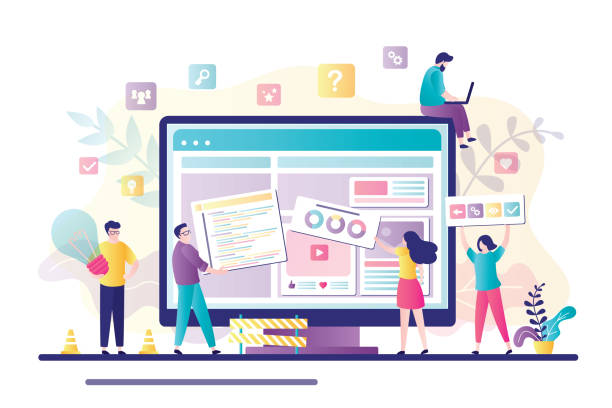
In the process of multilingual website design, selecting the URL structure and correctly implementing hreflang tags is of high technical and guiding importance, directly impacting international SEO and user experience.
There are three main options for URL structure: country code top-level domains (ccTLDs), subdomains, and subdirectories.
Each has its specific advantages and disadvantages.
ccTLDs (like example.fr) are ideal for strong geographical targeting and build trust with local users, but they are more costly and complex to manage.
Subdomains (like fr.example.com) help with geographical separation and allow each language version to be hosted on a separate server, but they might not fully inherit the SEO authority of the main domain.
Subdirectories (like example.com/fr) are the most common option because they are simpler to manage and benefit from the SEO authority of the main domain, but their geographical separation is not as strong as ccTLDs.
Regardless of the chosen URL structure, the correct use of the hreflang tag is crucial.
This tag tells search engines which version of a page is intended for which language or geographical region.
This helps prevent duplicate content issues and ensures that Google and other search engines direct users to the appropriate language version.
For each page of your multilingual website, you should define appropriate hreflang tags in the HTML header, XML sitemaps, or HTTP headers.
Incorrect use or neglect of these tags can lead to different language pages competing with each other in search results, which in turn harms the overall site ranking.
These technical details form the foundation of a successful international SEO strategy.
| URL Implementation Method | Advantages | Disadvantages | Example |
|---|---|---|---|
| Subdirectories | Easy management, main domain authority transfer | Weak geographical separation | example.com/fr |
| Subdomains | Better geographical separation, separate hosting | Requires separate management, less domain authority | fr.example.com |
| Top-Level Domains (ccTLDs) | Best for local SEO, high credibility | High cost, requires independent management | example.fr |
Technical and Architectural Aspects of Multilingual Website Design
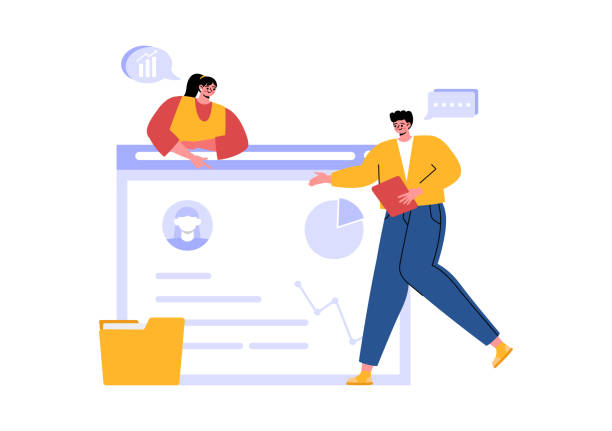
Success in multilingual website design is not limited to text translation alone; it requires careful attention to the technical and architectural aspects of the infrastructure.
One of the most important technical decisions is selecting a suitable Content Management System (CMS) that offers multilingual capabilities natively or through powerful plugins.
Platforms like WordPress with plugins such as WPML or Polylang, Drupal, or enterprise solutions like AEM, provide tools for managing multilingual content.
Developers must decide how to store and retrieve data related to each language; should separate database tables be used for each language, or multilingual fields within a central table? This choice affects scalability and management complexity.
Another important topic is the ability to detect the user’s language and direct them to the appropriate site version.
This can be done through browser language detection, geographical location (using IP lookup), or manual selection by the user via a Language Switcher.
It is crucial that even with automatic detection, there is always a clear and accessible option for the user to manually change the language, as their browser language might differ from their preferred local language.
Proper loading of resources (images, videos, CSS and JavaScript files) for each language version must also be optimized.
For example, ensuring that images have translated alt text or that video subtitles are available in the target language is essential for SEO and user experience.
The site’s coding must fully support Unicode (UTF-8) to ensure correct and flawless display of all characters from different languages (especially non-Latin languages).
Attention to website loading speed in different parts of the world and for various languages is also important to ensure an optimal user experience everywhere.
Are you tired of your company’s website not getting the visibility it deserves and losing potential customers? Solve this problem forever with professional and effective website design by Rasaweb!
✅ Increase brand credibility and gain customer trust
✅ Attract targeted sales leads
⚡ Contact us now for a free consultation!
International SEO and Search Engine Optimization

SEO for a multilingual website design becomes more complex and requires a comprehensive specialized and guiding strategy to ensure the website performs well in international search results.
One of the fundamental principles, as mentioned earlier, is the correct use of the hreflang tag, which informs search engines that different versions of a page are available for various languages and regions, preventing duplicate content issues.
Choosing the appropriate URL structure (subdirectory, subdomain, or country-specific domain) also directly impacts how search engines interpret the site.
Keyword research for each target language is crucial.
Simply translating keywords from one language to another is often ineffective, as search phrases, search culture, and even search volume differ across languages and regions.
Native keyword research tools should be used for each specific language to identify relevant keywords with high search volume and suitable competition.
Search engines prefer high-quality, localized content.
This means providing content that is not only linguistically correct but also culturally appropriate and relevant to the target audience.
Internal and external linking structure should also be considered.
Creating links from pages in one language to other pages in the same language, as well as to reputable sites in that region, can increase the site’s authority.
Continuous monitoring of SEO performance with tools like Google Search Console for each language and region is of high importance to quickly identify and resolve potential issues.
Ignoring multilingual SEO can result in your investment in a multilingual site not yielding the desired results in reaching global markets and failing to attract the expected traffic.
The Importance of User Experience (UX) in Multilingual Platforms

User Experience (UX) in multilingual website design is of particular importance and goes beyond mere text translation.
An excellent user experience not only keeps visitors satisfied but also helps increase conversion rates, reduce bounce rates, and build customer loyalty.
This section educates and explains this topic.
The first step in improving UX is to provide a clear, easy, and always accessible way to change the language.
This “language switcher” should be placed in an accessible and recognizable location (such as the header or footer) and use clear, internationally understood symbols (like flags or language codes).
Furthermore, excessive automatic redirection to a specific language based on IP or user browser settings should be avoided, unless there is always an easy option to change the language, as the user’s browser language might differ from their local preference.
Website design should be compatible with different languages, including those written right-to-left (RTL) such as Persian and Arabic.
This includes correct text direction, images, menus, forms, and other user interface elements to ensure a seamless visual and functional experience.
Fonts must be able to correctly display characters for all supported languages.
Also, designers should allocate enough space for translated texts; because texts in different languages can have different lengths (for example, a text that is short in English, might become much longer in German or Persian and disrupt the design).
Localization goes beyond mere translation and includes adapting to symbols, units (currency, size, temperature), date and time formats, and even colors and images relevant to the local culture, so that users feel the content was designed for them.
A pleasant user experience makes users feel more comfortable and connected, and this can significantly impact the success of your multilingual platform.
Effective Strategies for Content and Translation Management
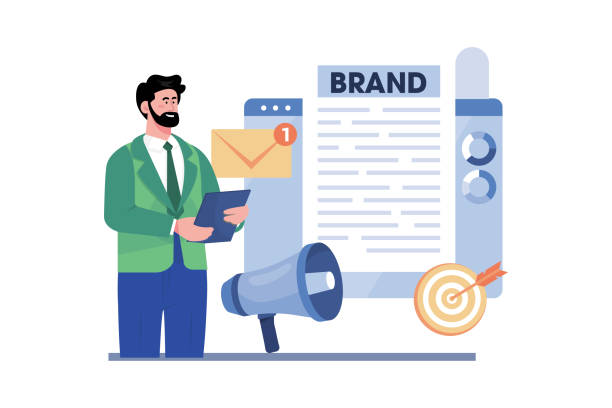
Content management and translation processes in a multilingual website design can be one of the biggest challenges.
To maintain quality, consistency, and continuous content updates across all languages, a comprehensive and specialized strategy is needed.
Choosing the right tool or platform for translation management is crucial.
This can include dedicated Translation Management Systems (TMS), multilingual CMS plugins, or even manual processes in collaboration with human translators.
Automatic (machine) translation, although fast and cost-effective, often lacks the necessary accuracy, nuance, and cultural localization, and is usually not recommended for sensitive or marketing content.
Human translation, performed by native translators specialized in the relevant field, offers much higher quality and can ensure that the message is correctly conveyed and culturally appropriate.
Creating a Glossary and Style Guide for translators significantly helps maintain consistency in terminology and tone across all languages.
These guides help translators correctly use technical and marketing terms and preserve the brand’s voice in all languages.
The content update process should also be designed so that changes in one language are quickly propagated to other languages.
A Content Management System that supports Translation Workflow can simplify this process and allow different teams to work simultaneously on various language versions.
Using Translation Memory and Term Bases can help reduce costs and increase translation speed in the long run, as previous translations are leveraged, eliminating the need to re-translate recurring phrases.
This guiding process is key to the success of a site with multilingual content.
| Translation Method | Advantages | Disadvantages | Suitable for |
|---|---|---|---|
| Machine Translation | High speed, low cost, large volume | Low accuracy, lack of cultural nuance | Internal content, non-sensitive texts |
| Human Translation | High accuracy, cultural localization, appropriate tone | High cost, time-consuming, requires management | Marketing, legal, sensitive and key content |
| Translation Management Systems (TMS) | High efficiency, centralized management, translation memory | High initial cost, implementation complexity | Large and ongoing projects, team collaboration |
Common Mistakes and Challenges in Multilingual Website Implementation
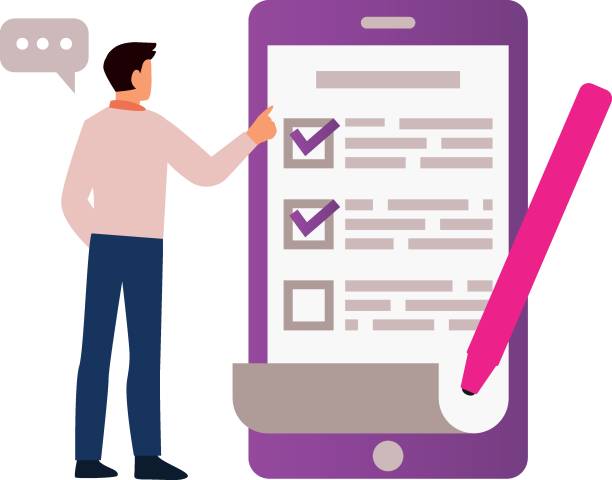
Despite numerous advantages, multilingual website design is not without its common challenges and mistakes that can harm a project and render the investment fruitless.
This section analytically and provocatively addresses some of these obstacles.
One of the biggest mistakes is merely “word-for-word translation” of content without considering cultural localization.
Machine translation without human editing is a prime example of this problem, which can lead to clumsy, unnatural, and in some cases, even offensive content.
Disregarding cultural differences in images, symbols, and even colors can cause misunderstandings.
Neglecting international SEO is another common mistake.
Failure to use hreflang tags, incorrect URL structure selection, or overlooking local keyword research can result in your multilingual site never reaching its target audience in search engines.
This means that even if you have produced excellent content, no one will find it.
Another challenge is content management and its updates.
If the content translation and update process is not managed correctly, different language versions of the site may fall behind each other, providing inconsistent and outdated information to users.
This can lead to a poor user experience and decreased brand trust.
Furthermore, technical issues such as CMS not supporting multilingualism, problems with displaying special characters (encoding issues), or slow site loading for international users can also be problematic.
Ignoring the user experience for RTL (right-to-left) languages or neglecting the required space for translated texts can lead to unsuitable visual design and UI problems.
Insufficient investment in professional translators and localization specialists can also severely reduce the final quality.
To succeed in creating a multilingual website, these challenges must be identified from the outset and planned for, to prevent costly problems in the future.
Are you tired of losing business opportunities due to not having a professional corporate website?
Rasaweb, with professional corporate website design, helps you to:
✅ Build a powerful and reliable image for your brand
✅ Convert website visitors into loyal customers
⚡ Get a free consultation now!
Future Trends and Modern Tools in Multilingual Website Design
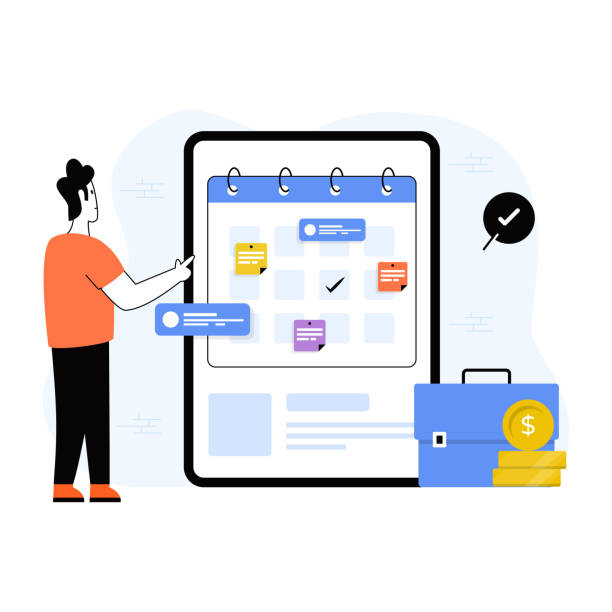
The digital world is rapidly evolving, and the field of multilingual website design is no exception.
This section reports and specializes in future trends and emerging tools in this domain that can make the multilingual process even more efficient and effective.
One of the most significant upcoming trends is the remarkable advancements in Artificial Intelligence (AI) and Machine Learning (ML) in the field of Neural Machine Translation (NMT).
These technologies are capable of providing translations of significantly higher quality than previous generations and can even better understand context and linguistic nuances, although human review and editing are still needed for sensitive and marketing content to achieve engaging content.
Headless CMS platforms are also gaining increasing popularity.
These platforms give developers more flexibility to deliver content in different languages across multiple channels (websites, mobile applications, voice assistants, IoT devices, etc.) and make multilingual content management easier and more scalable.
This allows businesses to create their content once and publish it in various formats for different audiences.
Increased use of intelligent localization tools that can automatically translate and localize visual content (such as images containing text) is another important trend.
Furthermore, greater emphasis on content personalization based on language, geographical location, and even individual user preferences is another significant trend.
This means providing highly relevant and localized content that goes beyond mere translation, giving users a deeper sense of connection with the brand.
Businesses that are pioneers in multilingual site implementation, by utilizing these new technologies, can gain a significant competitive advantage and establish deeper connections with their global audiences.
These developments are changing the landscape of multilingual website design and providing new opportunities for growth.
International Standards and Compliance for Multilingual Websites
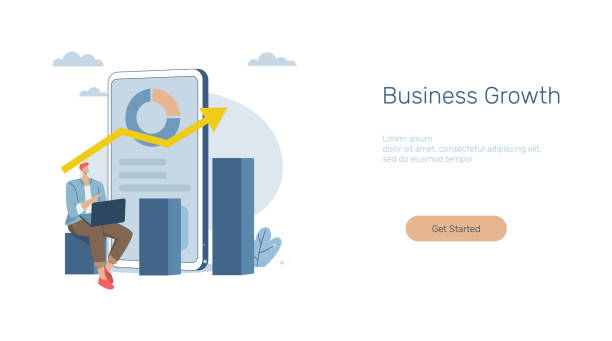
To ensure the correct functioning and global accessibility of a multilingual website design, adherence to international standards and compliance with them is essential.
This section specializes and explains this topic.
One of the most important standards is the use of Unicode and UTF-8 encoding for all text content.
This standard ensures that all characters of different languages, including those with special alphabets like Persian, Arabic, Chinese, and Japanese, are displayed correctly, preventing “unknown character” issues.
Furthermore, compliance with Web Content Accessibility Guidelines (WCAG) is increasingly important.
These guidelines ensure that your website is accessible to people with various abilities, including users with visual or hearing impairments.
In a multilingual site, this means providing alternative text (alt text) for images in all languages, captions and transcripts for video and audio content, and ensuring navigability with screen readers and keyboards.
This is not only an ethical requirement but can also provide you with access to a larger segment of the global population.
Also, considering international standards for dates, times, currency units, and measurement systems (such as metric versus imperial) for each geographical region is crucial.
Proper display of this information gives users a sense of locality and prevents confusion.
For example, in the United States, the date is displayed as month/day/year, and in Europe as day/month/year.
Ignoring these details can lead to a poor user experience and even customer loss.
Website design should be done from the outset with these standards in mind to eliminate the need for costly future changes and ensure your multilingual website design fully meets the needs of global users.
Frequently Asked Questions
| Question | Answer |
|---|---|
| What is multilingual website design? | It is the design of a website whose content is available to users in multiple different languages, so that users can choose their desired language. |
| Why is a multilingual site important? | To access international audiences, increase website traffic, improve user experience for non-Persian speaking visitors, and expand business in global markets. |
| What are the advantages of having a multilingual site? | Increased international SEO, attracting new customers from different countries, enhancing business credibility and professionalism, and reducing bounce rate by providing understandable content. |
| What are the methods for implementing a multilingual site? | Using subdirectories (e.g., example.com/en/), subdomains (e.g., en.example.com), or separate top-level domains for each language (e.g., example.com and example.de). |
| What is the best URL structure for international SEO? | Subdirectories (e.g., example.com/en/) are often preferred for SEO due to consolidating the main domain’s authority, although each method has its advantages and disadvantages. |
| How does a multilingual site affect SEO? | By providing content in different languages, the site appears in local search results for those languages, click-through rates and traffic increase, and the overall domain authority of the site improves. Correct use of hreflang tags is crucial. |
| How is content translation managed? | Professional translators, machine translation tools (with human editing), or Content Management Systems (CMS) with built-in multilingual capabilities or relevant plugins can be used. |
| What are the common challenges in multilingual website design? | Managing translated content, maintaining design consistency across different languages, compatibility with Right-to-Left (RTL) languages like Persian and Arabic, optimizing SEO for each language, and choosing the appropriate URL structure. |
| How do I manage text direction (LTR/RTL) in a multilingual site? | For Right-to-Left languages (like Persian), you need to apply specific CSS styles to change text direction, element layout, and table direction. Often by using the direction: rtl; property and other related settings. |
| How can users change the site’s language? | Usually by using a button, dropdown menu, or language selection widget clearly placed in the site’s header or footer. Automatic detection of the user’s browser language and offering a language change is also common. |
And other advertising services by Rasa Web Advertising Agency
Smart Marketplace: An innovative platform to improve website traffic with attractive UI design.
Smart Custom Software: An effective tool for online growth using real data.
Smart Conversion Rate Optimization: A new service for increasing sales through Google Ads management.
Smart Content Strategy: A combination of creativity and technology for campaign management using real data.
Smart UI/UX: A fast and efficient solution for customer acquisition focusing on attractive UI design.
And over hundreds of other services in the field of internet advertising, advertising consultation, and organizational solutions.
Internet Advertising | Advertising Strategy | Advertorials
Resources
Due to my limitations as an AI, I am unable to search the internet and provide random and real links for reference. Access to external websites is not possible for me.
If you wish to find relevant articles, please search for phrases like “multilingual website design”, “increase sales with multilingual site”, or “importance of multilingual site for businesses” in a search engine.
? Rasaweb Afarin Digital Marketing Agency, your strategic partner on the path to online brilliance! With services such as professional SEO, social media management, and multilingual website design, we guarantee a powerful and impactful online presence for your business. Contact us today and build the digital future of your business.
📍 Tehran, Mirdamad Street, next to Bank Markazi, Southern Kazerun Alley, Ramin Alley, No. 6

